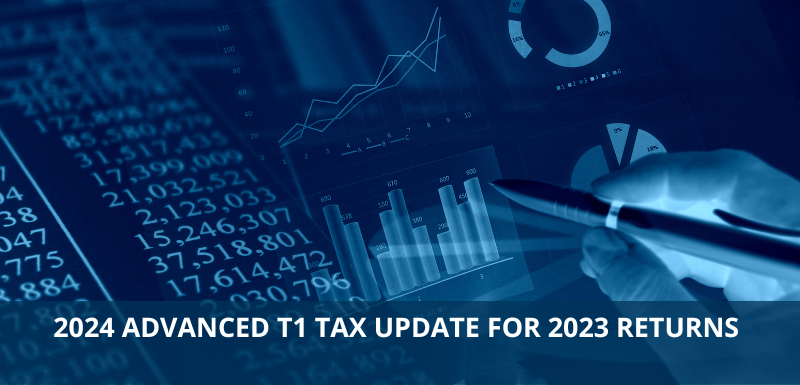Last updated: January 25 2024
It’s On! The T1 and the 104 Page Tax Form

Talk about long! Did you know that Form T2203, Provincial and Territorial Taxes for Multiple Jurisdictions is 104 pages long? The new form, just released online, together with the 2023 T1, provides an excellent scope on just how complicated tax filing really is in this country. It also makes it clear how critical it is for tax and financial professionals to take an annual Advanced T1 Tax Update course to perform with the high level of competency required to offer tax filing and planning services. Here’s what you need to know:
The T1. The federal tax form itself is 8 pages long, with the accompanying worksheet and Schedules 1 to 15 it’s 53 pages. But when you add in the required provincial forms and the auxiliary tax filing forms (some optional, some not) the number of CRA-related documents a tax filer may require can number in the hundreds.
Who needs to file the T2203? The T2203 is used when a taxpayer lives in one province or territory but all of their business income (including income received by a retired or inactive  partner) is earned from an enterprise with a permanent establishment in another province or territory.
partner) is earned from an enterprise with a permanent establishment in another province or territory.
Non-residents may be required to file this form in certain cases as well, if they had employment income in one province and business income in another. At least two different provincial tax calculations are necessary in these cases.
Nuances of the T2203. Understanding provincial taxation is a study onto itself. I must admit, in the early years of my career spent preparing and vetting thousands of returns that included farmers across the prairies, I’ve relished the opportunity to use the T2203 for those reasons. It contains versions of the provincial tax calculation forms 428, plus all the worksheets and schedules needed to calculate provincial and territorial taxes in Canada. Therefore, when filing returns with a T2203, it is not necessary to complete any Form 428 for any province or territory in the normal manner.
For those returns subject to minimum tax, it is still necessary to file Form T691 Alternative Minimum Tax ( a six page form). In addition, for those subject Tax on Split Income (TOSI) Form T1206 is required as well, and that means a separate tax calculation for each province and territory in which income is earned for these purposes.
Notably the T2203 doesn’t include personal tax credits available to residents of Newfoundland and Labrador, Ontario, Manitoba, BC, Yukon and Nunavut. That’s filed by the individual based on their personal province of residence.
Make a Big Difference. Tax and Financial professionals who specialize in working with business owners, immigrants and non-residents will want to shore up their knowledge on filing returns for those with incomes in multiple jurisdictions. While it is a blessing to have tax software instantly do the calculations, it’s critical to reverse engineer them in order to explain the differences in provincial taxation of income and help clients make decisions about where to locate their primary income-producing assets as a result.
